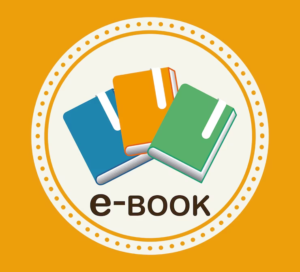Complete Book Publishing Guide for Aspiring Authors
Key Takeaways
- Grasp the ***essential stages*** of the book publishing process to better prepare for publication.
- Discover the ***significance*** of a comprehensive guide in navigating the publishing landscape.
- Recognize that ***knowledge and preparation*** are your allies in achieving publishing success.
- Learn why ***informed decision-making*** is crucial for new authors in the competitive publishing world.
Understanding the Book Publishing Landscape
Embarking on the journey of book publishing can be thrilling yet complex, especially for a new author teeming with creative zest. Recognizing the intricacies of various publishing pathways lays the foundation for achieving your publishing goals. Whether you envision your work nestled in a bookstore under a major publishing label or thrive on the autonomy that self-publishing provides, grasping the nuances between these two realms is paramount.
The Difference Between Traditional and Self-Publishing
In traditional book publishing, a literary agent often acts as the intermediary, presenting your work to large publishing houses. The allure of this pathway lies in the comprehensive support provided, including editing, designing, marketing, and distribution. However, it demands patience and the ability to relinquish creative control. In contrast, self-publishing grants you full command over every aspect of your book. This autonomy ensures a potentially higher royalty rate and the agility to bring your work to market swifter. However, it also places the responsibility of quality control, book marketing, and distribution solely on your shoulders.
Evaluating Your Publishing Goals and Options
Navigating the Publishing Industry as a New Author
Preparing Your Manuscript for Publication
Editing for Excellence: The book editing phase must not be underestimated. It’s not solely about correcting typos or grammar mistakes; it involves a thorough analysis for clarity, coherence, and narrative flow. This is where developmental editors play a crucial role by providing substantive suggestions to enhance the structure and content of your book.
- Grammar and syntax review
- Style and tone adjustments
- Plot and character development critique
- Consistency checks
Refining Layout: After the editing stage comes the book formatting dance, where typesetters and layout designers step in. A well-structured layout is indispensable for both the physical copy’s legibility and the digital version’s compatibility with various e-readers. Formatting is not just an aesthetic task; it plays a pivotal part in the reader’s experience.
- Choose the correct book size and layout design
- Header and footer creation for easy navigation
- Applying styles for chapters and subheadings
- Ensuring image and text alignment for visual appeal
Critical Feedback Loop: Beta readers provide an invaluable source of feedback that can highlight areas in need of improvement that the author might have overlooked. Incorporating this feedback is a balancing act; while not all advice can be followed, it is crucial to discern which insights contribute to elevating your manuscript to industry standards.
The Complete Book Publishing Guide: A Step-by-Step Journey
Reaching the final stages of book publication is a significant threshold. Once an author has honed their manuscript, the journey towards finalizing and protecting their work begins. This phase demands attention to detail and an understanding of some key publishing foundations, such as professional editing, ISBNs, and copyrights. Let’s delve into these critical components that bring your book one step closer to its readers.
Finalizing Your Book's Content and Structure
The Role of Professional Editing and Feedback
Understanding ISBNs and Copyrights
- An ISBN provides a unique identifier for your book, essential for sales and distribution.
- Copyright law protects your work from unauthorized reproduction, setting the stage for your rights as an author.
- Understanding these elements is pivotal to maintaining control over your work and ensuring it reaches the audience as intended.
Designing Your Book for Maximum Appeal
Crafting a Professional Book Cover Design
Interior Layout and Book Formatting Best Practices
Choosing the Right Fonts and Design Elements
Marketing and Distributing Your Book
In the current publishing landscape, savvy book marketing strategies are essential for authors aiming to build their brand and connect with their target audience. This includes a mix of online promotion, social media engagement, email marketing campaigns, and traditional media outreach. A robust book distribution network leverages both physical bookstores and online retailers, ensuring that your book is accessible to readers wherever they prefer to shop.
The rise of digital distribution platforms has allowed authors to reach readers across the globe more easily than ever. This global reach, facilitated by platforms such as Amazon Kindle Direct Publishing and Apple Books, presents unprecedented opportunities for authors to expand their presence beyond local markets.
When considering book printing options, authors must select between various models that cater to different needs and scales of distribution. Below, we outline the most prevalent printing methods and how they align with various publishing strategies:
Printing Option | Best For | Pros | Cons |
|---|---|---|---|
Print-on-Demand (POD) | Self-publishing authors, small-scale distribution | Low upfront costs, no inventory management, eco-friendly | Higher unit cost, limited customization options |
Bulk Printing | Large-scale distribution, authors with established audiences | Lower unit cost, more control over print quality and design | Requires inventory space, higher upfront investment risk |
Digital Short-Run | Special promotions, limited editions, events | Fast turnaround time, moderate unit cost, good for small batches | Higher per-unit cost than bulk, lower quality than offset printing |








